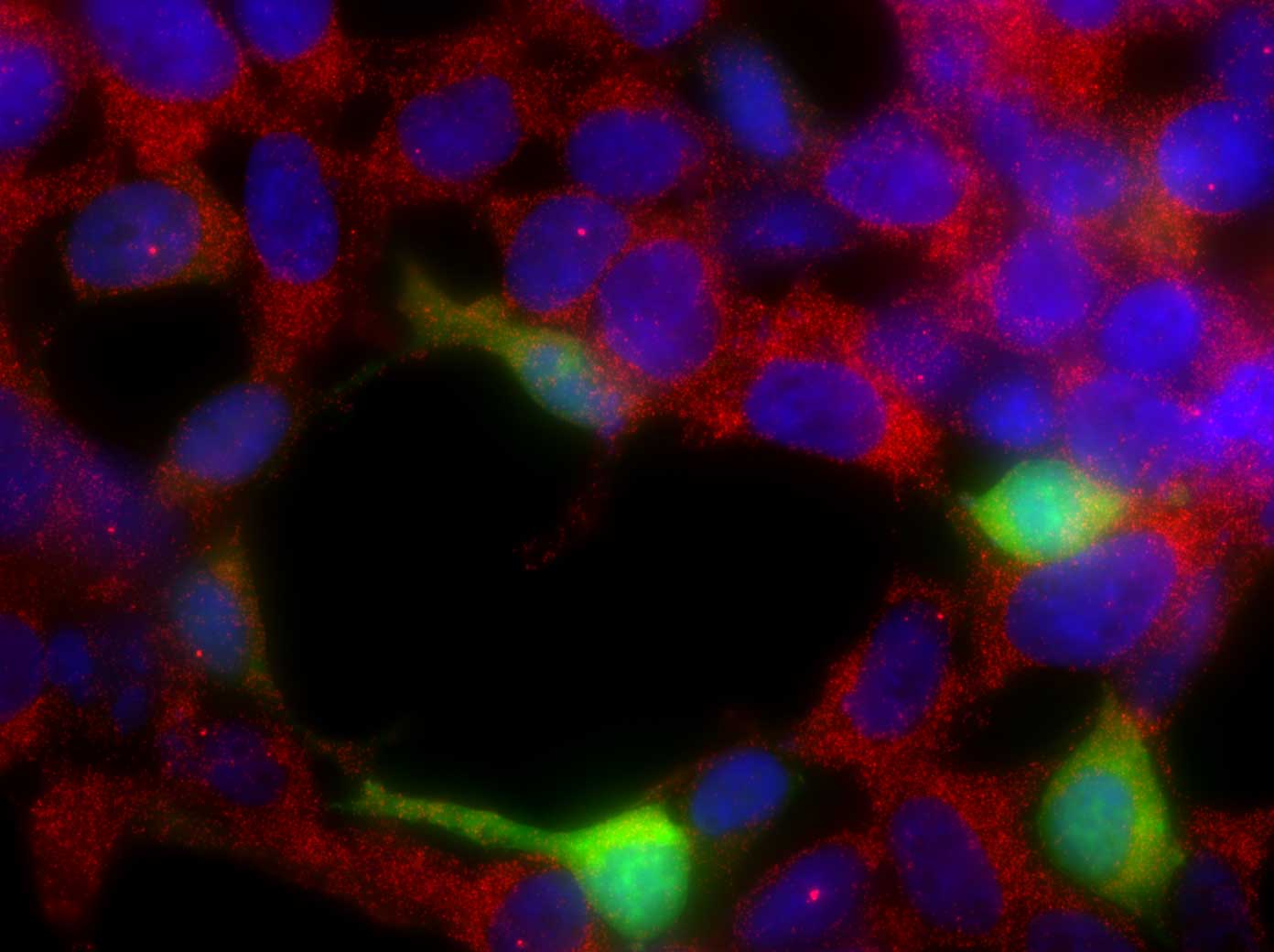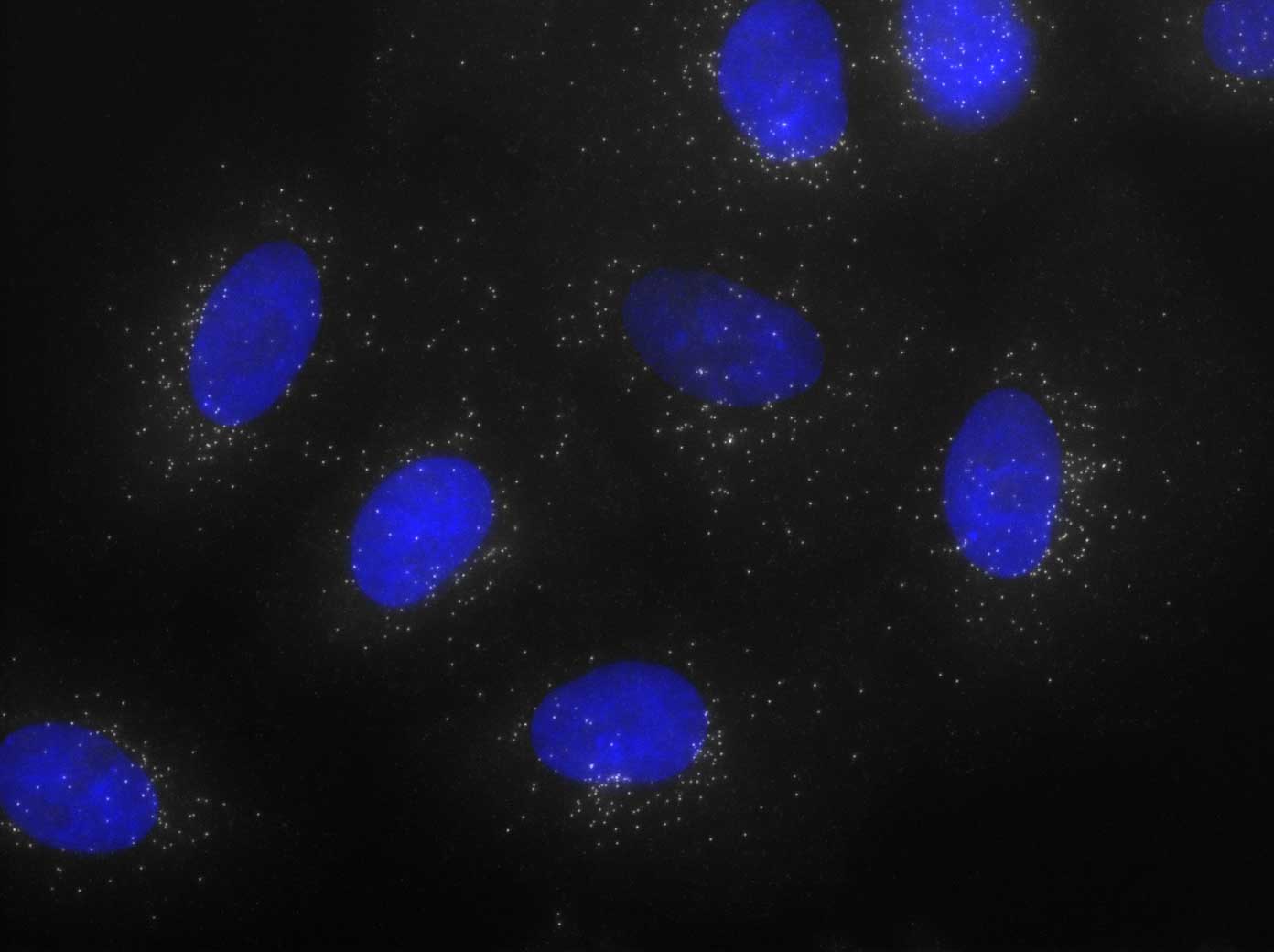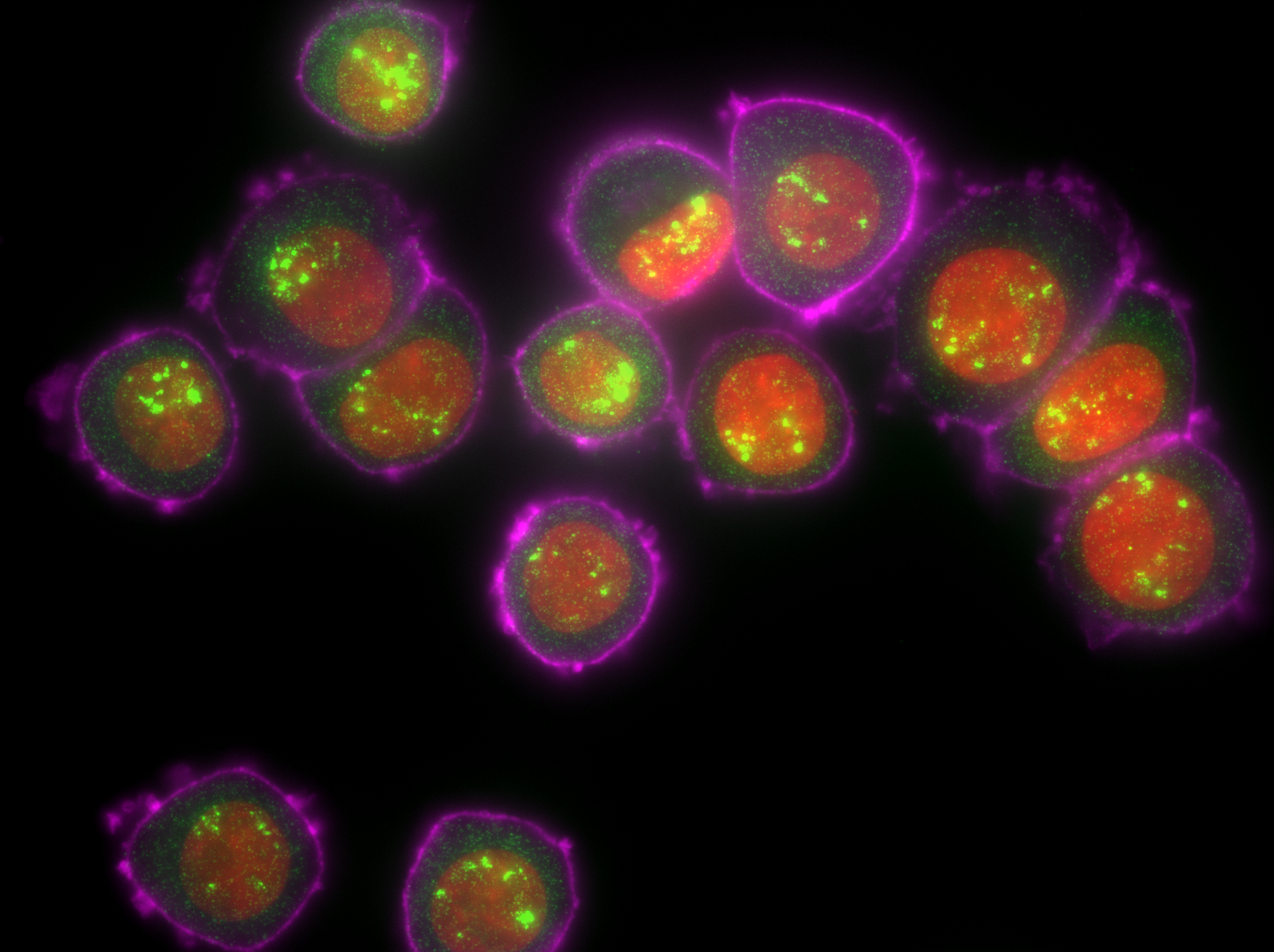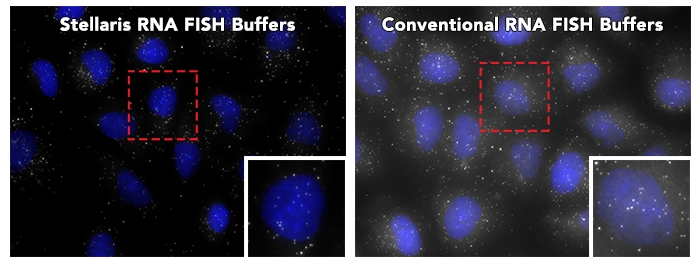The Stellaris RNA FISH protocol is simple, consisting of four main steps, as shown in the image below. For some sample types, the entire process can be completed in less than a day.
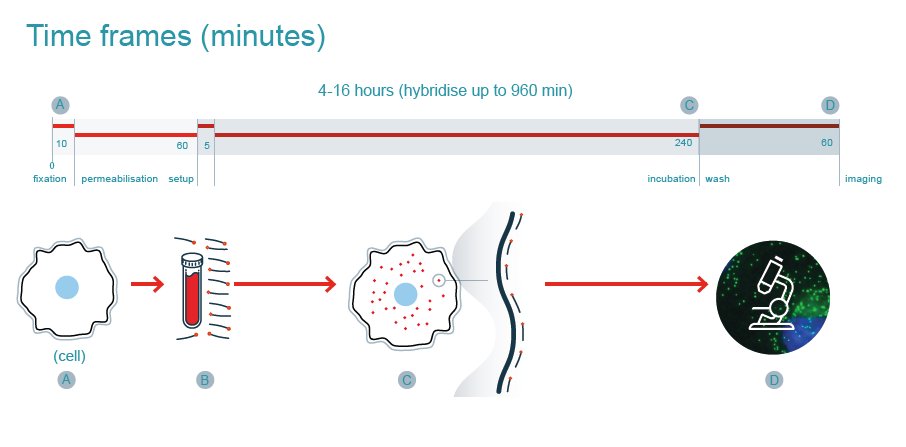
Step A: Prepare sample
A sample is grown, adhered, or sectioned onto a #1 cover glass and permeabilised with alcohol. No protease required!
Note: Variations in sample preparation between different organisms and sample types are covered in our online Stellaris protocols.
Step B: Hybridize probes
Hybridization can be completed in 4 to 16 hours at +37 °C in a standard laboratory incubator.
Step C: Wash sample
Removal of Hybridization Buffer and addition of wash buffers with short incubation periods are able to remove excess probes. The total time for this step is 1-1.5 hours.
Step D: Image sample
The sample is ready for imaging using a standard fluorescence microscope. We recommend using a wide-field fluorescence microscope though other imaging platforms can be used with Stellaris RNA FISH probes. Image processing is done using available online tools which convert Z stack images to a maximum intensity projection image.


